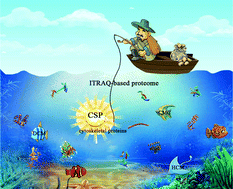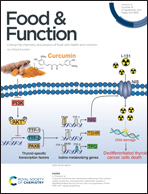Kaempferol-3-O-rutinoside, a flavone derived from Tetrastigma hemsleyanum, suppresses lung adenocarcinoma via the calcium signaling pathway†
Abstract
Lung cancer has been threatening human health worldwide for a long time. However, the clinic therapies remain unsatisfactory. In this study, the anti-adenocarcinoma lung cancer A549 cell line abilities of Tetrastigma hemsleyanum tuber flavonoids (THTF) were evaluated in vivo, and isobaric tags for relative and absolute quantification (iTRAQ)-based proteomic analysis was conducted to detect the protein alterations in THTF-treated solid tumors. The differentially expressed proteins were related to the cytoskeleton and mostly accumulated in the calcium signaling pathway. The in vitro study illustrated that 80 μg mL−1 THTF significantly suppressed cellular viability to approximately 75% of the control. Further results suggested that kaempferol-3-O-rutinoside (K3R), the major component of THTF, effectively triggered cytoskeleton collapse, mitochondrial dysfunction and consequent calcium overload to achieve apoptosis, which remained consistent with proteomic results. This study uncovers a new mechanism for THTF anti-tumor ability, and suggests THTF and K3R as promising anti-cancer agents, providing new ideas and possible strategies for future anti-lung cancer prevention and therapy.



 Please wait while we load your content...
Please wait while we load your content...